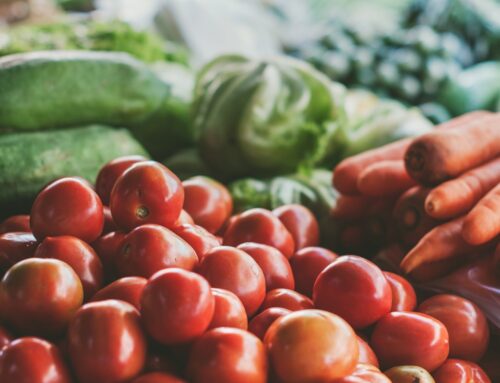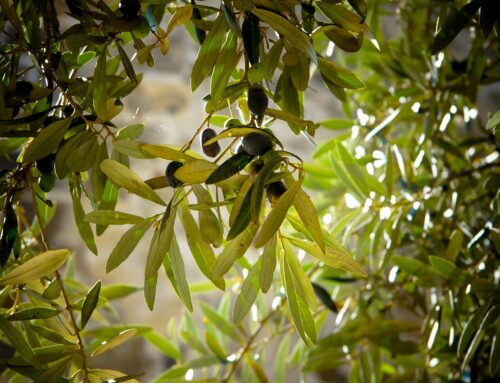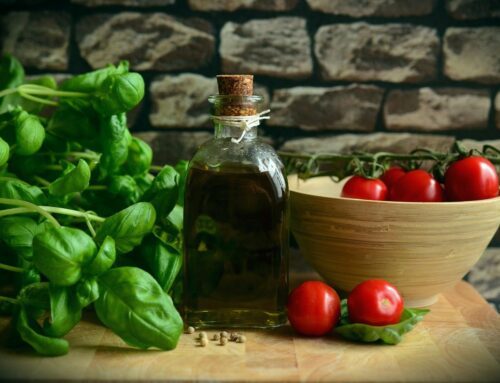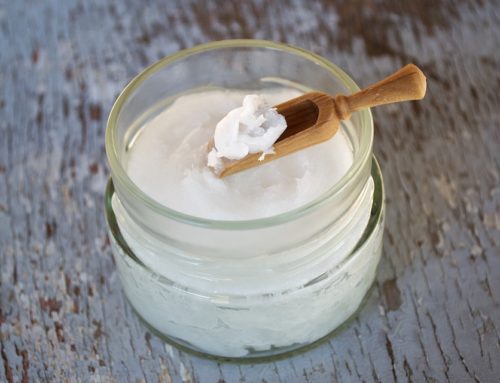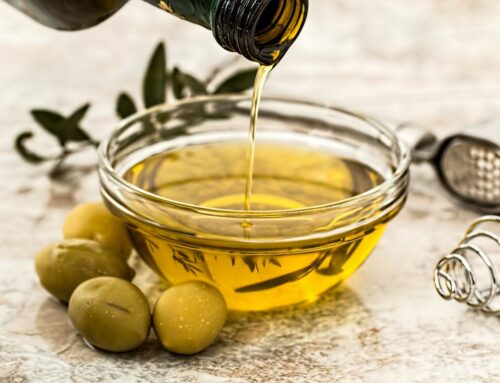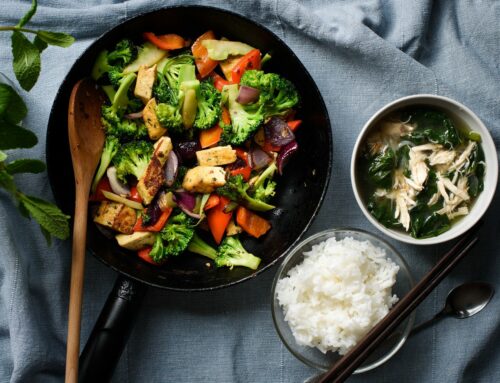Several articles on polyphenols and olive leaf extract. Written by Bart Maes. The organic veggie man. His articles always have a strong scientific background. No nonsense and no chicken talk.
Special thanks to: Professor Benlemlih M, Dr. Ghanam J and Professor H. Joyeux. In their work Polyphenols in olive oil, plants and olive leaf extracts, invaluable for health
Aletaha D, Neogi T., Silman A., Funovits J., Felson D., Bingham III, CO, et al. The 2010 American College of Rheumatology/European
League Against Rheumatism Classification Criteria for Rheumatoid Arthritis. Ann. rheumatism. 2010 ; 69: 1580-1588.
Beauchamp GK, Russell SJK, Diane M., Jianming L., Jana P., Qiang H., et al. Phytochemistry: Ibuprofenlike activity in extravirgin olive oil. Nature 2005 ; 437 : 45–46.
Berglin E., Kokkonen H., Einarsdottir E., Agren A., Rantapaa Dahlqvist S., Influence of female hormonal factors, in relation
to autoantibodies and genetic markers, on the development of rheumatoid arthritis in northern Sweden : a case-control study. scan. J. Rheumatol. 2010 ; 39 :454-60.
Boissier MC, Semerano L., Challal S., Saidenberg-Kermanac’h N., Falgarone G., Rheumatoid arthritis : from autoimmunity to synovitis and joint destruction : a review. J. Autoimmune 2012 ; 39 : 222–8.
Camargo A., Rangel-Zuniga O., Haro C., Meza- Miranda E., Pena-Orihuela P., Meneses M., et al. Olive oil phenolic compounds decrease the postprandial inflammatory response by reducing postprandial plasma lipopolysaccharide levels. food chem. 2014 ; 162 : 161-171.
Bitler CM, Viale TM, Damaj B., Crea R., Hydrolyzed Olive Vegetation
Water in Mice Has Anti-Inflammatory Activity. J. Nutr. 2005 ; 135: 1475-1479.
Cernadas L., Rodriguez-Romero B., Carballo-Costa L., Importance of nutritional treatment in the inflammatory process of rheumatoid arthritis patients ; a review. Nutr. landlady 2014 ; 29 : 237–45.
Covas MI, de la Torre K., Farre-Albaladejo M., Kaikkonen J., Fito M., Lopez-Sabater C., et al. Postprandial LDL phenolic content and LDL oxidation are modulated by olive oil phenolic compounds in human. Free Radic. bio. med. 2006 ; 40 : 608–16.
DeLoach LJ, Higgins MS, Caplan AB, Stiff JL, The visual analog scale in the immediate postoperative period : intra subject variability and correlation with a numeric scale. anesthetic. analog. 1998 ; 86 : 102–106.
Eriksson JK, Neovius M., Ernestam S., Lindblad S., Simard JF, Askling J., 2013. Incidence of rheumatoid arthritis in Sweden : a nationwide population-based assessment of incidence, its determinants, and treatment penetration. Arthritis Care Res. 2013 ; 65: 870-878.
Estruch R. Anti-inflammatory effects of the Mediterranean diet : the experience of the PREDIMED study. proc. Nutr. social. 2010 ; 69: 333–40.
Estruch, R., Martinez-Gonzalez, MA, Corella, D., Salas-Salvado J, RuizGutierrez V, Covas MI, et al. Effects of a Mediterranean-Style Diet on Cardiovascular Risk Factors: A Randomized Trial. Ann. Internal. med. 2006 ; 145: 1-11.
Executive Summary of the Third Report of the National Cholesterol Education Program (NCEP) Expert Panel on Detection, Evaluation, and Treatment of High Blood Cholesterol in Adults (Adult Treatment Panel III). JAMA 2001 ; 285 : 2486-2497.
Firestein, G. Evolving concepts of rheumatoid arthritis. Nature 423, 356–361 (2003).
Fito M, Cladellas M, Torre R, Marti J, Munoz D, Schroder H, et al., Anti-inflammatory effect of virgin olive oil in stable coronary disease patients : a randomized, crossover, controlled trial. EUR. J. Clin. Nutr. 2007 ; 62 : 570–574.
Fortes C, Garcia-Vilas J, Quesada A, Medina M. Evaluation of the anti-angiogenic potential of hydroxytyrosol and tyrosol, two bio-active phenolic compounds of extra virgin olive oil, in endothelial cell cultures. food chem. 2012 ; 134 : 134–140.
Giner E, Andujar I, Recio M, Rios J, Cerda-Nicolas J, Giner R. Oleuropein ameliorates acute colitis in mice. J. Agric. food Chem. 2011 ; 59: 12882–92.
Glossop JR, Dawes PT, Mattey DL. Association between cigarette smoking and release of tumor necrosis factor alpha and its soluble receptors by peripheral blood mononuclear cells in patients with rheumatoid arthritis. Rheumatology (Oxford) 2006 ; 45: 1223-1229.
Helmick CG, Felson DT, Lawrence RC, Gabriel S, Hirsch R, Kwoh CK, et al. Estimates of the prevalence of arthritis and other rheumatic conditions in the United States. Part I. Arthritis Rheum. 2008 ; 58:15-25.
Hinson R, Williams J, Shacter E. Elevated interleukin 6 is induced by prostaglandin E2 in a murine model of inflammation: possible role of cyclooxygenase-2. proc. natl. sci. academy. 1996 ; 93 : 4885–4890.
Hu T, He XWW, Jiang JGG, Xu XLL. Hydroxytyrosol and its potential therapeutic effects : a review. J. Agric. food chem. 2014 ; 62: 1449–55.
Inoue H, Takamori M, Shimoyama Y, Ishibashi0 H, Yamamoto S, Koshihara Y. Regulation by PGE2 of the production of interleukin-6, macrophage colony stimulating factor, and vascular endothelial growth factor in human synovial fibroblasts. Bro. J. Clin. Pharmacol. 2002 ; 136: 287-295.
Smolen JS, and Redlich K. Rheumatoid arthritis. In Rose N & Mackay I (Eds): The Autoimmune Diseases (Fifth Edition); 2014. p. 511-523.
Kamei D, Yamakawa K, Takegoshi Y, Mikami-Nakanishi M, Nakatani Y, Oh-Ishi S, et al. Reduced pain hypersensitivity and inflammation in mice lacking microsomal prostaglandin E synthase-1. J. Biol. Chem. 2004 ; 279: 33684-95.
Killeen M, Linder M, Pontoniere P, Crea R. NF-κβ signaling and chronic inflammatory diseases : exploring the potential of natural products to drive new therapeutic opportunities. Drug Discov. Today 2014 ; 19: 373-378.
Landre-Beauvais AJ. Doit-on admettre une nouvelle espece de Goutte sous la denomination de Goutte, Asthenique Primitive ? an. VIII, Paris, Brisson 1800.
Lu Y, Wahl LM. Oxidative stress augments the production of matrix metalloproteinase-1, cyclooxygenase-2, and prostaglandin E2 through enhancement of NF-kappa activity in lipopolysaccharide-activated human primary monocytes. J. Immunol. 2005 ; 175 : 5423–9.
Lu B, Hiraki L, Sparks JA, Malspeis S, Chen CY, Awosogba JA, et al . Being overweight or obese and risk of developing rheumatoid arthritis among women : a prospective cohort study. Ann. rheumatism. this. 2014 ; 73: 205-459.
Maiuri M, Stefano D, Meglio P, Irace C, Savarese M, Sacchi R, et al. Hydroxytyrosol, a phenolic compound from virgin olive oil, prevents macrophage activation. Naunyn Schmiedebergs Arc.h Pharmacol. 2005 ; 371: 457-465.
Makarov S. NF-kappa in rheumatoid arthritis : a pivotal regulator of inflammation, hyperplasia, and tissue destruction. Arthritis Res. 2001 ; 3 : 200–206.
Mattey DL, Dawes PT, Clarke S, Fisher J, Brownfield A, Thomson W, et al. Relationship among the HLADRB1 shared epitope smoking and rheumatoid factor production in rheumatoid arthritis. Arthritis Rheumatism. 2002 ; 47: 403-407.
Packard CJ, Bezlyak V, McLean JS, Batty GD, Ford I, Burns H, et al. Early life socioeconomic adversity is associated in adult life with chronic inflammation, carotid atherosclerosis, poorer lung function and decreased cognitive performance : a cross-sectional, population-based study. BMC Public Health 2011 ;11, 42.
Page TH, Turner JJ, Brown AC, Timms EM, Inglis JJ, Brennan FM, et al. Nonsteroidal antiinflammatory drugs increase TNF production in rheumatoid synovial membrane cultures and whole blood. J. Immunol. 2010 ; 185 : 3694–3701.
Park Y, Lee A, Shim SC, Lee J, Choe JY, Ahn H, et al. Effect of n-3 polyunsaturated fatty acid supplementation in patients with rheumatoid arthritis : a 16-week randomized, double-blind, placebo-controlled, parallel-design multicenter study in Korea. j. Nutr. biochem. 2013 ; 24 : 1367–72.
Pettit AR, Ji H, von Stechow D, Muller R, Goldring SR, Choi Y, et al. TRANCE/RANKL knockout mice are protected from bone erosion in a serum transfer model of arthritis. am. J. Pathol. 2001 ; 159 : 1689–1699.
Prochazkova M, Zanvit P, Doležal T, Prokešova L, Kršiak M. Increased gene expression and production of spinal cyclooxygenase 1 and 2 during experimental osteoarthritis pain. Physiol. res. 2009 ; 58: 419-25.
Richard N, Arnold S, Hoeller U, Kilpert C, Wertz K, Schwager J. Hydroxytyrosol Is the Major Anti-Inflammatory Compound in Aqueous Olive Extracts and Impairs Cytokine and Chemokine Production in Macrophages. Planta Medica 2011 ; 77 : 1890-1897.
Rosignoli P, Fuccelli R, Fabiani R, Servili M, Morozzi G. Effect of olive oil phenols on the production of inflammatory mediators in freshly isolated human monocytes. J. Nutr. biochem. 2013 ; 24:1513-1519.
Salminen E, Heikkila S, Poussa T, Lagstrom H, Saario R, Salminen S, et al. Female patients tend to alter their diet following the diagnosis of rheumatoid arthritis and breast cancer. Prev. med. 2002 ; 34: 529-35.
Sanchez-Fidalgo S, Sanchez de Ibarguen L, Cardeno A, Alarcon de la Lastra C. Influence of extra virgin olive oil diet enriched with hydroxytyrosol in a chronic DSS colitis model. EUR. J. Nutr. 2011 ; 51 : 497–506.
Scher J, Pillinger M, Abramson S. Nitric oxide synthases and osteoarthri. curr. Rheumatol. Rep. 2007 ; 9:9-15.
Scoditti E, Calabriso N, Massaro M, Pellegrino M, Storelli C, Martines G, et al. Mediterranean diet polyphenols reduce inflammatory angiogenesis through MMP-9 and COX-2 inhibition in human vascular endothelial cells : a potentially protective mechanism in atherosclerotic vascular disease and cancer. Arch. biochem. biophys. 2012 ; 527 : 81–89.
Semerano L, Clavel G, Assier E, Denys A, Boissier MC. Blood vessels, a potential therapeutic target in rheumatoid arthritis ? Jt Bone Spine 2011 ; 78: 118-123.
Smolen J, Aletaha D, Redlich K. The pathogenesis of rheumatoid arthritis : new insights from old clinical data ? Wet. Rev. Rheumatol. 2012 ; 8 : 235–43.
St-Laurent-Thibault C, Arseneault M, Longpre F, Ramassamy C. Tyrosol and hydroxytyrosol, two main components of olive oil, protect N2a cells against amyloid-b-induced toxicity. Involvement of the NF-κβ signaling. curr. Alzheimer’s Res. 2011 ; 8 : 543–551.
Strand V, Kimberly R, Isaacs J. Biologic therapies in rheumatology: lessons learned, future directions. Wet. Rev. Drug Discov. 2007 ; 6 : 75–92.
Ruiz-Esquide V, Sanmarti R. Tobacco and Other Environmental Risk Factors in Rheumatoid Arthritis. Rheumatol Clin. 2012 ; 8 : 342–350.
isioli F, Galli C, Bornet F, Mattei A, Patelli R, Galli G, et al. Olive oil phenolics are dose- dependently absorbed in humans. FEBS Lett. 2000 ; 468 :159–160.
Visioli F, Galli C, Grande S, Colonnelli K, Patelli C, Galli G, et al . Hydroxytyrosol excretion differs between rats and humans and depends on the vehicle of administration. J. Nutr. 2003 ; 133 : 2612–2615.
Wells G, Becker JC, Teng J, Dougados M, Schiff M, Smolen J, et al. Validation of the 28-joint Disease Activity Score (DAS28) and European League Against Rheumatism response criteria based on C-reactive protein against disease progression in patients with rheumatoid arthritis, and comparison with the DAS28 based on erythrocyte sedimentation rate. Ann. rheumatism. This . 2009 ; 68 : 954–60.
Wu HJ, Ivanov II, Darce J, Hattori K, Shima T, Umesaki Y, et al . Gutresiding segmented filamentous bacteria drive autoimmune arthritis via T helper 17 cells. Immunity 2010 ; 32: 815-827.
Zhang X, Cao J, Jiang L, Zhong L. Suppressive effects of hydroxytyrosol on oxidative stress and nuclear Factor-kappa activation in THP‐1 cells. bio. pharm. bull. 2009a ; 32 : 578–582.
Zhang X, Cao J, Zhong L. Hydroxytyrosol inhibits pro-inflammatory cytokines, iNOS, and COX-2 expression in human monocytic cells. Naunyn Schmiedebergs Arch. Pharmacol. 2009B ; 379 : 581–6.
Markin D, Duek L, Berdicevsky I, “In vitro antimicrobial activity of olive leaves”, Mycoses, Volume 46, Issue 3-4, pages 132–136, March 2003
Serafini M, Laranjinha JA, Almeida LM, Maiani G, “Inhibition of human LDL lipid peroxidation by phenol-rich beverages and their impact on plasma total antioxidant capacity in humans”, Journal Nutr. Biochem, Issue 11 pages 585-590, 2000
Khayyal MT et al., “Blood pressure lowering effect of an olive leaf extract (Olea europaea) in L-NAME induced hypertension in rats” Arzneimittelforschung 52(11):797-802, 2002
Manna C, Migliardi V, Gollino P, SCognamiglio A, Galletti P, Chiariello M, Zoppia V. ,“Oleuropein prevents oxidative myocardial injury induced by ischemia and reperfusion” Journal Nutr Biochem, Aug 2004;15(8):461-6 , 2004
Bao J, Zhang DW, Zhang JZ, Huang PL, Lee-Huang S, “Computational study of bindings of olive leaf extract (OLE) to HIV-1 fusion protein gp41.” FEBS Lett. 2007 Jun 12;581(14):2737-42. Epub 2007 May 21
Jemai H. et al., “Lipid-lowering and antioxidant effects of hydroxytyrosol and its triacetylated derivative recovered from olive tree leaves in cholesterol-fed rats, Journal Agric Food Chem. Issue 56(8):2630-6, 2008
Yamada K, Ogawa H, Hara A, Yoshida Y, et al, “Mechanism of the antiviral effect of hydroxytyrosol on influenza A virus including H1N1, H3N2, H5N1, H9N2” Antiviral Res. 2009 Jul;83(1):35-44. doi: 10.116/j.antiviral.2009.03.002. Epub 2009 Mar 24
Jemai H. et al., “Antidiabetic and Antioxidant Effects of Hydroxytyrosol and Oleuropein from Olive Leaves in Alloxan-Diabetic Rats” J Agric Food Chem, 2009 Oct 14;57(19):8798-804
Vlassios Goulas, Vassiliki Exarchou Anastassios N. Troganis Eleni Psomiadouet al, “Phytochemicals in olive-leaf extracts and their antiproliferative activity against cancer and endothelial cells”, Molecular Nutrition & Food Research, Volume 53, Issue 5, Pages 600-608, 2009
Poudyal H. Et al., “Olive Leaf Extract Attenuates Cardiac, Hepatic, and Metabolic Changes in High Carbohydrate-, High Fat-Fed Rats” J Nutr. 2010
J. Munoz-Marin et al, “Cytoprotective effect of hydroxytyrosyl alkyl ether derivatives after oral administration to rats in a model of glucose-oxygen deprivation in brain slices.”, Journal of Agricolture Food Chem. 60(31):7659-64, 2012
Castaner O. et al. “Protection of LDL from oxidation by olive oil polyphenols is associated with a downregulation of CD40-ligand expression and its downstream products in vivo in humans”, Journal Clin Nutr. 2012 Mar 21
M. Kostomoiri, A. Fragkuoli, M. Sagnou et at, “Oleuropein, an Anti-oxidant Polyphenol Constituent of Olive Promotes -Secretase Cleavage of the Amyloid Precursor Protein”, Cell Mol Neurobiol., 33(1): 147-54 , 2013.
lList of literature and scientific works
Abbey M, Nestle PJ & Baghurst PA (1993).
Antioxidant vitamins and low density lipoprotein oxidation. American Journal of Clinical Nutrition. 58, 52.
Aeschbach R, Loliger J, Scott BC, Murcia A, Butler J, Halliwell B, Aurome OI (1994).
Antioxidant actions of tymol, carvacrol, 6-gingerolo, zingerone and hydroxytyrosol. Food and Chemical Toxicology . 32 : 31–36.
Amanda L, Clark, Kathryn Mansfield Matera (2010).
Effect of unsaturation in fatty acids on the binding and oxidation by myeloperoxidase: Ramifications for the initiation of atherosclerosis. Bioorganic & Medicinal Chemistry Letters. 20 : 5643–5648.
Andrikopoulos N, Hassapidou M, Manoukas A (1989) .
The Tocopherol Content of Greek Olive Oils. J. Sci. Food Agric. 46 : 503-509.
Anon (1983).
Presencia Historica del Aceite de Oliva, in (Cabrera,FB,ed), Las Raices del Aceite de Oliva, Ministerio de Agricultura, Servicio de Publicaciones Agrarias, Madrid.
Aparicio R., Luna G (2002).
Characterization of Monovarietal Virgin Olive Oils. EUR. J. Lipid Sci. technology. 104 : 614-627.
Aroma OI (1994).
Nutrition and health aspects of free radicals and antioxidants. Food and Chemical Toxicology. 32 : 671–683.
Aruoma OI, Deiana M, Jenner A, Halliwell B, Harparkash K, Banni S, Corongiu FF, Dessi MA, Aeschbach R (1998).
Effect of hydroxytyrosol found in extravirgin olive oil on DNA damage and on low-density lipoprotein oxidation. Journal of Agricultural and Food Chemistry . 46 : 5181–5187.
Baccouri O, Guerfel M, Baccouri B, Cerretani L, Bendini A, Lercker G, Zarrouk M, Daoud Ben Miled D (2008) .
Chemical composition and oxidative stability of Tunisian monovarietal virgin olive oils with regard to fruit ripening. Food Chemistry. 109 : 743–754.
Bai C, Yan X, Takenakay M, Sekiya S, Nagata T. (1998) .
Determination of synthetic hydroxytyrosol in rat plasma by GC–MS. Journal of Agricultural and Food Chemistry. 46 : 3998–4001.
Beauchamp G, Keast R, Morel D (2005).
Ibuprofen-like Activity in Extra Virgin Olive Oil. Nature . 437 : 45-46.
Belitz HD, Grosch W, Schieberle P (2004).
Food Chemistry (3rd edition). Berlin : Springer Verlag.
Belkner J, Wiesner R, Rathman J, (1993).
Oxygenation of Lipoproteins by Mammalian Lipoxygenases. EUR. J. Biochem. 213 : 251-261.
Beltran G, Aguilera A, del Rio C, (2005).
Influence of Fruit Ripening Process on the Natural Antioxidant Content of Hojiblanca Virgin Olive Oils. food chem. 89 : 207-215.
Ben Sassi A, Boularbah A, Jaouad A, Walker G, Boussaid A (2006).
A comparison of Olive oil Mill Wastewaters (OMW) from three different processes in Morocco. Process Biochemistry. 41 (1) : 74–78.
Bendini A, Cerretani L, Carrasco-Pancorbo A, Maria GómezCaravaca A, Segura-Carretero A, Fernández-Gutiérrez A and G Lercker (2007).
Phenolic Molecules in Virgin Olive Oils : a Survey of Their Sensory Properties, Health Effects, Antioxidant Activity and Analytical Methods. An Overview of the Last Decade. Molecules . 12 : 1679-1719.
Benkhalti F, Prost J, Paz E, Perez-Jimenez F, El Modafar C, El Boustani E (2002).
Effects of feeding virgin olive oil or their polyphenols on lipid of rat liver. Nutrition Research. 22 : 1067–1075.
Bianco A, Chiacchio M, Grassi D (2006).
Phenolic Components of Olea europaea : Isolation of New Tyrosol and Hydroxytyrosol Derivatives. food chem. 95 : 562-565.
Bianco A, Coccioli F, Guiso M (2001).
Presence in Olive Oil of a New Class of Phenolic Compounds : Hydroxyl Isochromans. food chem. 77 : 405-411.
Bisignano G, Tomaino A, Lo Cascio R, Crisafi G, Uccella N, Saija A (1999).
On the in vitro antimicrobial activity of oleuropein and hydroxytyrosol. Journal of Pharmacy and Pharmacology. 51 : 971–974.
Blazquez-Martinez JM (1996).
History of Olive Tree, The World Olive Encyclopaedia, IOOC. Madrid, pp19-54.
Blekas G, Psomiadou E, Tsimidou M (2002).
On the Importance of Total Polar Phenols to Monitor the Stability of Greek Virgin Olive Oil. EUR. J. Lipid Sci. technology. 104 : 340-346.
Bonanome A, Pagnan A, Biffanti S (1992).
Effect of Dietary Monounsaturated and Polyunsaturated Fatty Acids on the Susceptibility of Plasma Low Density Lipoproteins to Oxidative Modification. arterioscler. Thromb. 12 : 529-533.
Bonanome A, Pagnan A, Caruso D, Toia A, Xamin A, Fedeli E, Berra B, Zamburlini A, Ursini F, Galli G, (2000).
Evidence of postprandial absorption of olive oil phenols in humans. Nutrition, Metabolism and Cardiovascular Diseases . 10 : 111–120.
Boskou D (1996).
Olive oil : Chemistry and Technology. AOCS Press, Champaign. IL: 52–83.
Boskou D, In. Gunstone F (ed) (2002).
Vegetable Oils in Food Technology. Oxford : CRC Press. 244-277.
Brenes M., Hidalgo F, Garcia A, (2000).
Pinoresinol and 1-acetoxypinoresinol, Two New Phenolic Compounds Identified in Olive Oil. JAOCS . 77 :715-720.
Brown MS, Goldstein JL (1983).
Lipoprotein metabolism in the macrophage: implications for cholesterol deposition in atherosclerosis. Annual Review of Biochemistry. 52:223.
Bull-Cosiales P, Irimia P, Berrade N, (2008).
Carotid intima-media thickness is inversely associated with olive oil consumption. Atherosclerosis . 196 :742–748.
Cannon R (1998).
Role of nitric oxide in cardiovascular disease : focus on the endothelium. Clin Chem. 44 :1809–1819.
Cantarelli C (1961).
Sui polifenoli presenti nella drupa e nell’olio di oliva. riv. Italy. sost. Grasse. 38 : 69–72.
Cao G, Sofia E, Prior RL (1997).
Antioxidant and antioxidant behavior of flavonoids : structure-activity relationships. Free Radical Biology and Medicine. 22 : 749–760.
Cao G, Sofia E, Prior RL (1997).
Antioxidant and antioxidant behavior of flavonoids : structure-activity relationships. Free Radical Biology and Medicine. 22 : 749–760.
Capasso R, Evidente A, Schivo L, Orru G, Marcialis MA, Cristinzio G (1995).
Antibacterial polyphenols from olive oil mill waste waters. Journal of Applied Bacteriology. 79 : 393–398.
Carluccio M, Siculella L, Ancora M, (2003).
Olive oil and red wine antioxidant polyphenols inhibit endothelial activation : antiatherogenic proper ties of Mediterranean diet phytochemicals. Arterioscler Thromb. Vasc. bio. 23 :622–629.
Carrasco-Pancorbo A, Cerretani L, Bendini A, Segura-Carretero A, Gallina-Toschi T, Fernndez-Gutirrez A (2005).
Analytical determination of polyphenols in olive oils. J. Sep. sci. 28 : 837 – 858.
Caruso D, Visioli F, Patelli R., Galli C, Galli G (2001).
Urinary excretion of olive oil phenols and their metabolites in humans. Metabolism . 50: 1426–1428.
Cohen J (2002).
therapies. Confronting the limits of success. science ; 296 :2320–2324.
Cominacini L, Garbin U, Cenci B, Davoli A (1991).
Predisposition to LDL oxidation during copper-catalyzed oxidative modification and its relation to a-tocopherol content in humans. Clinica Chimica Acta. 204 : 57–68.
Covas MI, Konstantinidou V, Fito M (2009).
Olive oil and cardiovascular health. J. Cardiovasc. Pharmacol. 54 : 477–82.
D’Angelo S, Manna C, Migliardi V, Mazzoni O, Morrica P, Capasso G, Pontoni G, Galletti P, Zappia V (2001) .
Pharmacokinetics and metabolism of hydroxytyrosol, a natural antioxidant from olive oil. Drug Metabolism and Disposition. 29 : 1492–1498.
Daccache A, Lion C, Sibille N, Gerard M, Slomianny C, Lippens G, Cotelle P (2011).
Oleuropein and derivatives from olives as Tau aggregation inhibitors. Neurochemistry International.
de Groot E, Hovingh G, Wiegman A, (2004).
Measurement of arterial wall thickness as a surrogate marker for atherosclerosis. Circulation . 109 : III33–III38.
De Leonardis A, Macciola V, De Felice M (1998).
Rapid Determination of Squalene in Virgin Olive Oils Using Gas-liquid Chromatography. It. J. Food Sci. 1 : 75-80.
de Rojas-Walker T, Tamir S, Ji H, Wishnock J, Tennanbaum SR (1995).
Nitric oxide induces oxidative damage in addition to deamination in macrophages DNA. Chemical Research in Toxicology. 8 : 473–477.
Deiana M, Aruoma OI, Bianchi MDLP, Spencer JPE, Kaur H, Halliwell B, Aeschbach R, Banni S, Dessi MA, Corongiu FP (1999).
Inhibition of peroxynitrite dependent DNA base modification and tyrosine nitration by the extra virgin olive oil-derived antioxidant hydroxytyrosol. Free Radical Biology and Medicine. 26 : 762–769.
Dell’Agli M, Fagnani R, Mitro N (2006).
Minor components of olive oil modulate proatherogenic adhesion molecules involved in endothelial activation. J. Agric. food chem. 54 : 3259–3264.
Dell’Agli M, Maschi O, Galli G (2007).
Inhibition of platelet aggregation by olive oil phenols via cAMP phosphodiesterase. Bro. J. Nutr. 11 :1–7.
DiGiovacchino L (1989).
Olive Processing Systems. Separation of the Oil from the Must. olive . 26 : 21-29.
DiGiovacchino L (1996).
Influence of Extraction Systems on Olive Oil Quality, in (Boskou D., ed), Olive Oil, Chemistry and Technology. AOCS Press, Champaign, Illinois. 12-51.
Di Giovacchino L, Sestili S, Di Vincenzo D (2002).
Influence of olive processing on virgin olive oil quality. EUR. J. Lipid Sci. technology. 104 : 587–601.
Dougherty RM, Galli C, Ferro-Luzzi A (1987).
Lipid and Phospholipid Fatty Acid Composition of Plasma, Red Blood Cells, and Platelets and How They are Affected by Dietary Lipids : a Study of Normal Subjects From Italy, Finland, and the USA. am. J. Clin. Nutr. 45 : 443-455.
DT Angelo S, Ingrosso D, Perfetto B, Baroni A, Zappia M, Lobianco Lubrano L, Tufano MA, Galletti P (2001) .
UVA irradiation induces l-isoaspartyl formation in melanoma cell proteins. Free Radic. bio. med. 31 :1– 9.
Duriez P (2004).
Mecanisms de formation de la plaque d’atherome. La revue de médecine interne 25 : S3–S6.
Edwin N Frankel (2011).
Nutritional and biological properties of extra virgin olive oil. J. Agric. food chem.
Esposito K, Marfella R, Ciotola M, (2004).
Effect of a Mediterranean style diet on endothelial dysfunction and markers of vascular inflammation in the metabolic syndrome : a randomized trial. JAMA . 292 :1440–1446.
Esterbauer H, Gebicki J, Puhl H, Jurgens G (1992).
The role of lipid peroxidation and antioxidants in oxidative modification of LDL. Free Radical Biology and Medicine. 13:341.
Estruch R, Martinez-Gonzalez M, Corella D (2006).
Effects of a Mediterranean-style diet on cardiovascular risk factors. Ann. int. med. 145 :1–11.
Evagelia T, Harris N. Lazarides and Konstantinos B (2004).
Olive Mill Wastewater Treatment. Petrotos Aristotle University of Thessaloniki, Department of Food Science and Technology, 54006, Thessaloniki, Greece.
Finotti E, DiMajo D (2003).
Influence of solvents on the antioxidant property of flavonoids. Nahrung/Food. 47 : 186–187.
Gandul-Rojas B, Minguez-Mosquera M (1996).
Chlorophyll and Carotenoid Composition in Virgin Olive Oils From Various Spanish Olive Varieties, J. Sci. Food Agric. 72 : 31-39.
Gardner CD, Kraemer HC (1995).
Monounsaturated Versus Polyunsaturated Dietary Fat and Serum Lipids. A Meta-analysis. arterioscler. Thromb. Vasc. bio. 15 : 1917-1927.
Grams G, Eskins K (1972).
Dye-sensitized Photoxidation of Tocopherols: Correlation Between Singlet Oxygen Reactivity and Vitamin E Activity. biochemistry . 11 : 606-608.
Granados-Principal SP, Quiles LJ, Ramirez-Tortosa CL, SanchezRovira P, and Ramirez-Tortosa MC (2010).
Hydroxytyrosol : from laboratory investigations to future clinical trials. Nutrition Reviews. 68(4):191–206.
Gunstone F, Harwood J, Padley F (eds) (1994).
The Lipid Handbook (2nd Edition). London: Chapman and Hall.
Gunstone F.D. (2004).
The Chemistry of Oils and Fats Sources, Composition, Properties and Uses. Oxford, UK : Blackwell Publishing. Gutfinger T (1981). Polyphenols in Olive Oils. JAOCS . 58 : 966-968.
Gutteridge JM, Halliwell B (1992).
Comments on review of Free Radicals in Biology and Medicine, second edition, by Barry Halliwell and John MC Gutteridge. Free Radic. bio. med. 12 : 93-95.
Haiwell B, Gutteridge JMC (1999).
“Free Radicals in Biology and Medicine.” Oxford University Press, Oxford.
Halliwell B (1997).
Antioxidants and human disease : a general introduction. Nutrition Reviews. 55, 44–52.
Halliwell B, Aeschbach R, Loliger J, Aruoma OI (1995) .
The characterization of antioxidants. Food and Chemical Toxicology. 33 : 601–617.
Halliwell B, Gutterige MC (1990).
Role of free radicals and catalytic metal ions in human disease : an overview. Methods in Enzymology. 186 : 1–85.
Hamden K, Carreau S, Lajmi S, Aloulou D, kchaou D, Elfeki A (2008).
Protective effect of 1,7-estradiol on hyperglycemia, stress oxidant, liver dysfunction and histological changes induced by alloxan in male rat pancreas and liver. steroids . 94 : 495–501.
Hamdi K. Hamdi, Castellon R (2005).
Oleuropein, a non-toxic olive iridoid, is an anti-tumor agent and cytoskeleton disruptor. Biochemical and Biophysical Research Communications . 334 : 769 778.
Hammer S.M. (2005).
Clinical practice. Management of newly diagnosed HIV infection. N. Engl. J. Med. ; 353 : 1702–1710.
Han J, Talorete TP, Yamada P, Isoda H (2009).
Anti-proliferative and apoptotic effects of oleuropein and hydroxytyrosol on human breast cancer MCF-7 cells. Cytotechnology . 59 :45–53.
Hao J, Shen W, Yu G, Jia H, Li X, Feng Z, Wang Y, Weber P, Wertz K, Sharman E, Liu J (2010).
Hydroxytyrosol promotes mitochondrial biogenesis and mitochondrial function in 3T3-L1 adipocytes. Journal of Nutritional Biochemistry. 21 : 634–644.
Harborne JB, Dey PM. Methods in Plant Biochemistry. Harborne JB (Ed.) (1989).
Academic Press , London (UK).
Hegsted DM., Ausman LM, Johnson JA (1993).
Dietary Fat and Serum Lipids : an Evaluation of the Experimental Data. am. J. Clin. Nutr. 57 : 875-883.
Henquin C, Debuyser A, Drews G (1992).
Plant, Regulation of K+ permeability and membrane potential in insulin-secretory cells, in : PR Flatt (Ed.), Nutrient Regulation of Insulin Secretion, Porland, London. pp. 173–192.
Hertog MLG, Feskens EJM, Katan MB, Kromhout D (1993).
Dietary antioxidant flavonoids and risk of coronary heart disease : the Zutphen Elderly Study. Lancet . 342 : 1007.
Hrncirik K, Fritsche S (2004).
Comparability and Reliability of Different Techniques for the Determination of Phenolic Compounds in Virgin Olive Oil. EUR. J. Lipid Sci. technology. 106 : 540-549.
Huang CL, Sumpio BE (2008).
Olive oil, the Mediterranean diet, and cardiovascular health. J. Am. col. Surg. 207 :407–16.
Huang MT, Osawa T, Ho CT, Rosen RT (1994).
Food phytochemicals for cancer prevention. In Fruits and Vegetables. ACS Symposium Series no. 46. Washington, D.C.: American Chemical Society.
Jialal I, Fuller CJ, Huet BA (1995).
The effect of α-tocopherol supplementation on LDL oxidation. A dose-response study. Arteriosclerosis, Thrombosis, and Vascular Biology. 15 : 190–198.
Johnson IT, Williamson G, Musk SRR (1994).
Anticarcinogenic factors in plant foods. A new class of nutrients. Nutrition Research Reviews. 7 : 1–30.
Katan MB (1995).
Fish and Heart Disease. N. Engl. J. Med. 332 : 10241025.
Katiyar S, Mukhtar H (1996).
Tea in the chemoprevention of cancer: epidemiologic and experimental studies. int. J. Oncol. 8 : 221–238.
Keceli T, Gordon MH (2001).
The antioxidant activity and stability of the phenolic fraction of green olives and extra virgin olive oil. Journal of the Science of Food and Agriculture. 81 : 1391–1396.
Lanzon A, Albi T, Cert A (1994).
The Hydrocarbon Fraction of Virgin Olive Oil and Changes Resulting From Refining. JAOCS . 71 : 285-291.
Lavee S (1996).
Olive Tree Biology and Physiology, World Olive Encyclopaedia, IOOC, Madrid, pp 5910.
Lee-Huang S, Lin Huang P, Zhang D, Wook Lee J, Bao J, Sun Y, Chang YT, Zhang J, Lee-Huang P (2007).
Discovery of Small-Molecule HIV-1 Fusion and Integrase Inhibitors Oleuropein and Hydroxytyrosol : I. Fusion Inhibition. biochem. biophys. res. Communion. 23 ; 354(4) :872–878.
Lee-Huang S, Zhang L, Huang PL, Chang YT (2003).
Anti-HIV activity of olive leaf extract (OLE) and modulation of host cell gene expression by HIV-1 infection and OLE treatment. biochem. biophys. res. Communion. ; 307 :1029–1037.
Leenen R, Roodenburg AJ, Vissers MN, Schuurbiers JA, van Putte KP, Wiseman SA, van de Put FH (2002).
Supplementation of plasma with olive oil phenols and extracts : influence on LDL oxidation. Journal of Agricultural and Food Chemistry. 50: 1290–1297.
Loukas M, Krimbas CB (1983).
History of Olive Cultivars Based on the Generic Distances, J. Hort. Science. 58 : 121-127.
Manna C, Galletti P, Cucciolla V, Moltedo O, Leone A, Zappia V (1997).
The protective effect of the olive oil polyphenol (3,4-dihydroxyphenyl) ethanol counteracts reactive oxygen metabolite-induced cytotoxicity in Caco-2 cells. Journal of Nutrition. 127 : 286–292.
Manna C, Galletti P, Cucciolla V, Montedoro GF, Zappia V (1999).
Olive oil hydroxytirosol protects human erythrocytes against oxidative damages. Journal of Nutritional Biochemistry. 10 : 159–165.
Manna C, Galletti P, Maisto G, Cucciolla V, Dangelo S, Zappia V (2000).
Transport mechanism and metabolism of olive oil hydroxytyrosol in Caco-2 cells. FEBS Letters. 470 : 341–344.
Manzi P, Panfili G, Esti M, (1998).
Natural Antioxidants in the Unsaponifiable Fraction of Virgin Olive Oils From Different Cultivars. j. sci. Food Agric. 77 : 115-120.
Martin S, Andriantsitohaina R (2002).
Cellular mechanism of vasculo-protection induced by polyphenols on the endothelium. Annales de cardiologie et d’angeiologie. 51 : 304–315.
Masella R, Cantafora A, Modesti D, Cardilli A, Gennnaro L, Bocca A, Coni E (1999).
Antioxidant activity of 3, 4-DHPEA-EA and protocatechuic acid : a comparative assessment with other olive oil biophenols. Redox Report . 4: 113–121.
Mateos R, Espartero J, Trujillo M (2001).
Determination of Phenols, Flavones and Lignans in Virgin Olive Oil by Solid Phase Extraction and HPLC With Diode Array Ultraviolet Detection. J. Agric. food chem. 49 : 2185-2192.
Menotti A, Blackburn H, Kromhout D, Nissinen A, Fidanza F, Giampaoli S, Buzina R, Mohacek I, Nedeljkovicff S, Aravanis C, et Toshima H (1997). Changes in population cholesterol levels and coronary heart disease deaths in seven countries. EUR. heart j. 18 : 566–571.
Mensink RP, Zock PL, Kester AD (2003).
Effects of Dietary Fatty Acids and Carbohydrates on the Ratio of Serum Total to HDL Cholesterol and on Serum Lipids and Apolipoproteins : a Meta-analysis of 60 Controlled Trials. am. J. Clin. Nutr. 77 : 1146-1155.
Minguez-Mosquera M, Rejano-Navarro L, Gandul-Rojas B (1991).
Color Pigment Correlation in Virgin Olive Oil. JAOCS . 68 : 332-336.
Minguez-Mosquera M., Gandul-Rojas B, Garrido-Fernandez (1990).
J Pigments Present in Virgin Olive Oil. JAOCS . 67 : 192-196.
Mario-Casas E, Covas MI, Farre M, Fito M, Ortuno J, Weinbrenner T, Roset P, de la Torre R, (2003a).
Hydroxytyrosol disposition in humans. Clinical Chemistry. 49 : 945–952.
Mario-Casas E, Covas MI, Fito M, Farre-Albadalejo M, Marrugat J, de la Torre R (2003b).
Tyrosol and hydroxytyrosol are absorbed from moderate and sustained doses of virgin olive oil in humans. European Journal of Clinical Nutrition. 57 : 186–190.
Mario-Casas E, Farre Albaladejo M, Covas MI, Rodriguez JO, Menoyo Colomer E, Lamuela Raventos RM, de la Torre R (2001).
of hydroxytyrosol and tyrosol in human urine after olive oil intake. Analytical Biochemistry. 294 : 63–72.
Montedoro GF, Cantarelli C (1969).
Indagine sulle sostanze fenoliche presenti nell’olio di oliva. riv. Italy. sost. Grasse. 46 : 115–124.
Montedoro GF, Garofolo L, Bertuccioli M (1986).
Factors Shaping the Quality Characteristics of an Olive Oil. Industry Alimentari. 25 : 549555.
Morales M, Tsimidou M, In Harwood J, Aparicio R (eds) (2002).
Handbook of Olive Oil. Gaitesburg : Aspen Publishers . pp: 393-438.
Mukherjee S, Lekli I, Gurusamy N, Bertelli AAA, Das DK (2009).
Expression of the longevity proteins by both red and white wines and their cardioprotective components, resveratrol, tyrosol, and hydroxytyrosol. Free Radical Biology & Medicine. 46 : 573–578.
Nenadis N, Tsimidou M (2002).
Determination of Squalene in Olive Oil Using Fractional Crystallization for Sample Preparation. JAOCS . 79 : 257-259.
Newcomb TG & Loeb LA (1998).
Mechanism of mutagenicity of oxidatively-modified bases. In Molecular Biology of Free Radicals in Human Diseases , pp. 137–166 [OI Aruoma and B Halliwell, editors]. Saint Lucia : OICA International.
Ninni V (1999).
A Statistical Approach to the Biosynthetic Route of the Fatty Acids in Olive Oil : Crosssectional and Time Series Analyses. J. Sci. Food Agric. 79: 2113-2121.
Ortega RM (2006).
Importance of functional foods in the Mediterranean diet. publ. Health Nutr. 9: 1136–1140.
Owen R, Ant W, Giacosa A (2000).
Identification of Lignans as Major Components in the Phenolic Fraction of Olive Oil. Clinic. Chem. 46 : 976-988.
Owen RW, Giacosa A, Hull WE, Haubner R, Spiegelhalder B, Bartsch H (2000a).
The antioxidant/anticancer potential of phenolic compounds isolated from olive oil. European Journal of Cancer. 36 : 1235–1247.
Owen RW, Ant W, Giacosa A (2000).
Identification of Lignans as Major Components in the Phenolic Fraction of Olive Oil. clin. Chem. 46 : 976-988.
Palsamy P, Subramanian S (2009).
Modulatory effects of resveratrol on attenuating the key enzymes activities of carbohydrate metabolism in streptozotocinnicotinamide induced diabetic. Chem. bio. interact. 179 : 356–362.
Panza F, Solfrizzi V, Colacicco AM, D’introno A, Capurso C, Torres F, Del Parigi A, Capurso, S, Capurso A (2004).
Mediterranean diet and cognitive decline. Public Health Nutr. 7 : 959–963.
Papadopoulos G & Boskou D (1991).
Antioxidant effect of natural phenols on olive oil. Journal of the American Oil Chemists Society. 68 : 669–671.
Parthasarathy S (1991).
Novel atherogenic oxidation modification of low density lipoprotein. Diabetes/Metabolism Reviews. 7 : 163.
Perez-Jimenez F (2005).
International conference on the healthy effect of virgin olive oil. EUR. J. Clin. invest. 35 : 421–424.
Perez-Jimenez F, Castro P, Lopez-Miranda J (1999).
Circulating levels of endothelial function are modulated by diet y monounsaturated fat. Atherosclerosis . 145 : 351–358.
Perez-Jiménez F, Delgado Lista J, Perez-Martínez P, Lopez-Segura
F, Fuentes F, Cortes B, Lozano A, Lopez-Miranda J (2006).
Olive oil and haemostasis : a review on its healthy effects. Public Health Nutrition. 9(8A) : 1083–1088.
Perrin J (1992).
Minor Components and Natural Antioxidants of Olives and Olive Oils. Rev. Franc.
Pezzuto J.M. (1997).
Plant derived anticancer agents. Biochemical Pharmacology . 53 : 121–133.
Princen HMG, van Poppel G, Vogelazang C, Buytenhek R, Kok FJ (1992).
Supplementation with vitamin E but not b-carotene in vivo protects low density lipoprotein from lipid peroxidation in vitro Effect of Cigarette Smoking. Arteriosclerosis and Thrombosis. 12 : 554-562.
Psaltopoulou T, Naska A, Ofranos P (2004).
Olive oil, the Mediterranean diet, and arterial blood pressure : the Greek European Prospective Investigation into Cancer and Nutrition (EPIC) study. am. J. Clin. Nutr. 80 : 1012–1018.
Psomiadis E, Karakostas K, Blekas G (2003).
Proposed Parameters for Monitoring Quality of Virgin Olive Oil (Koroneiki cv). EUR. J. Lipid Sci. technology. 105 : 403-408.
Psomiadis E, Tsimidou M (1998).
Simultaneous HPLC Determination of Tocopherols, Carotenoids and Chlorophylls for Monitoring Their Effect on Virgin Olive Oil Oxidation. J. Agric. food chem. 46 : 5132-5138.
Psomiadis E, Tsimidou M (2001).
Pigments in Greek Virgin Olive Oils : Occurrence and Levels. J. Sci. Food Agric. 41 : 640-647.
Rabascall NH, Riera JB (1987).
Variations of the Tocopherols and Tocotrienols Content in the Obtention, Refining and Hydrogenation Processes of Edible Oils. Gracas Aceites. 38 : 145-148.
Raederstorff D, Wang-schmidt Y, Wertz K (2010).
Use of hydroxytyrosol as an anti-aging agent. pub. no. : US 2010/0130621 A1.
Rahmanism M, Csallany A (1991).
Chlorophyll and β-carotene Pigments in Moroccan Virgin Olive Oils Measured by High Performance Liquid Chromatography, JAOCS . 68 : 672-674.
Rao C, Newmark H, Reddy B (1998).
Chemopreventive Effect of Squalene on Colon Cancer. Carcinogenesis . 19 : 287-290.
Raven PD, Parthasarathy S, Grasse BJ, Miller E, Almazan F, Mattson FH, Khoo JC, Steinberg D, Witztum JL (1991).
Feasibility of using an oleate-rich diet to reduce the susceptibility of low-density lipoprotein to oxidative modification in humans. American Journal of Clinical Nutrition. 54 : 701–706.
Rice-Evans CA, Miller NJ, Paganga G (1996).
StructureAnantioxidant activity relationship of flavonoids and phenolic acids. Free Radical Biology and Medicine. 20 : 933–956.
Rohn TT, Hinds TR, Vincenzi OF (1993).
Ion transport ATPases as targets for free radical damage. Protection by an aminosteroid of the Ca21 pump ATPase and Na1/K1 pump ATPase of human red blood cell membranes. Biochemical Pharmacology. 46 : 525–534.
Rossell J.B. (2001).
Frying : Improving quality. Woodhead Publishing Limited, CRC Press, Boca Raton. Boston. New York Washington, DC.
Ruiz-Canela M, Martínez-González MA (2011).
Olive oil in the primary prevention of cardiovascular disease. Maturitas . 68 : 245–250.
Ruiz-Gutierrez V, Juan ME, Cert A, Planas JM (2000) .
Determination of hydroxytyrosol in plasma by HPLC. Analytical Chemistry. 72 : 4458–4461.
Ryan D, Robardo K (1998).
Critical review : phenolic compounds in olives. Analyst . 123 : 31R-44R.
Sacchi R (2007).
Extraction technology In L’Extravergine, a guide to the best certified quality olive oil in the world. Oreggia, M. Ed. Cucina vini. 82-103. Sadrzadeh SMH, Graf E, Panther SS, Hallaway PE, Eaton JW (1984). hemoglobin. A biologic Fenton reagent. Journal of Biological Chemistry. 259 : 14354–14356.
Salami M, Galli C, De Angelis L, Visioli F (1995).
Formation of F2-isoprostanes in oxidized low density lipoprotein. Inhibitory effects of hydroxytyrosol. Pharmacological Research . 31: 275–279.
Scaccini C, Nardini M, D’Aquino M, Gentili V, Di Felice M, Tomassi G (1992).
Effect of dietary oils on lipid peroxidation and on antioxidant parameters of rat plasma and lipoprotein fractions. Journal of Lipid Research. 33 : 627–633.
Scania P, Casu M, Lai A (1999).
Recognition and Quantitation of Cis-vaccenic and Eicosenoic Fatty Acids in Olive Oils by C-13 Nuclear Magnetic Resonance Spectroscopy. Lipids . 34 : 757759.
Servilism M, Piacquadio P, De Stefano G (2002).
Influence of a New Crushing Technique on the Composition of the Volatile Compounds and Related Sensory Quality of Virgin Olive Oil. EUR. J. Lipid Sci. technology. 104 : 483-489.
Shahidi F (1997).
Natural antioxidants : Chemistry, health effects and applications. AOCS Press, Champaign , IL (USA), 97–149.
Singleton V, Orthofer R, Lamuela-Raventos R, In. Packer L (ed)
(1999). Methods in Enzymology (Vol. 299). San Diego: Academic Press, 152-178.
Smith T, Yang G, Serial D (1998).
Inhibition of 4-(methylnitrosamino)1-(3-pyridyl)-1-butanone-induced Lung Tumorigenesis by Dietary Olive Oil and Squalene. Carcinogenesis . 19 : 703-706.
Solfrizzi V, Colacicco AM, D’Introno A, Capurso C, Torres F, Rizzo C, Capurso A, Panza F, (2006).
Dietary intake of unsaturated fatty acids and age-related cognitive decline : a 8.5-year follow up of the Italian longitudinal study on aging. neurobiology. ageing. 27 : 1694–1704.
Solfrizzi V, Colacicco AM, D’Introno A, Capurso C, Torres F, Rizzo C, Capurso A, Panza F, (2006).
Dietary intake of unsaturated fatty acids and age-related cognitive decline : a 8.5-year follow up of the Italian longitudinal study on aging. neurobiology. ageing. 27 : 1694–1704.
Solfrizzi V, Panza F, Capurso A (2003).
The role of diet in cognitive decline. J. Neural. transm. 110 : 95–110.
Solfrizzi V, Panza F, Torres F, Mastroianni F, Del Parigi A, Venezia A, Capurso A, (1999).
High monounsaturated fatty acids intake protects against age-related cognitive decline. neurology . 52: 1563–1569.
205 •••
The effects of olive oil on health •••
Speroni E, Guerra MC, Minghetti A, Crespi-Perello N, Pasini P, Piazza F, Roda A (1998).
Oleuropein evaluated in vitro and in vivo as an antioxidant. Phytotherapy Research. 12 : 98–100.
Sumpio B, Cordova A, Berke-Schlessel D (2006).
Green tea, the “Asian paradox,” and cardiovascular disease. J. Am. col. Surg. 202 :813–825.
Sung B, Jin Jeong KI, Seok Song YE, Jin Son M, Pal Yu B, Young Chung H (2005).
cDNA representational difference analysis used in the identification of genes related to the aging process in rat kidney. Mechanisms of Aging and Development. 126 : 882–891.
Tanaka T, Makita H, Kawamori T, Kawabata K, Mori H, Murakami A, Satoh K, Hara A, Ohigashi H, Koshimizu K (1997).
A xanthine oxidase inhibitor acetoxychavicol acetate inhibits azoxymethane-induced colonic aberrant crypt foci in rats. Carcinogenesis . 18: 1113–1118.
Tiscornia E, Fiorina N, Evangelisti F (1982).
Chemical Composition of Olive Oil and Variations Induced by Refining. riv. Italy. sost. Grasse. 59 : 519-555.
Trichopoulou A, Costacou T, Bamia C (2003).
Adherence to a Mediterranean Diet and Survival in a Greek Population. N. Engl. J. Med. 348 : 2599-2608.
Trichopoulou A, Orfanos P, Norat T (2005).
Modified Mediterranean Diet and Survival : EPIC-Elderly Prospective Cohort Study. Bmj. 330 : 991.
Tuck KL, Freeman MP, Hayball PJ, Stretch GL, Stupans I (2001).
The in vivo fate of hydroxytyrosol and tyrosol, antioxidant phenolic constituents of olive oil, after intravenous and oral dosing of labeled compounds to rats. Journal of Nutrition. 131 : 1993–1996.
Tuck KL, Hayball PJ (2002).
Major phenolic compounds in olive oil : Metabolism and health effects. The Journal of Nutritional Biochemistry. 13 : 644.
Tuck KL, Hayball PJ, Stupans I (2002).
Structural characterization of the metabolites of hydroxytyrosol, the principal phenolic component in olive oil, in rats. Journal of Agricultural and Food Chemistry. 50 : 2404–2409.
Uccella N (2001).
The olive biophenols : hedonic-sensory descriptors of evoo and wotos in the Mediterranean aliment culture. In Food Flavors and Chemistry: Advances of the New Millennium. AH Spanier, F. Shahidi, TH Parliment, CJ Mussinan, CT Ho, E. TratrasContis Eds. The Royal Society of Chemistry Publishers, Cambridge, UK. 253-265.
Van Dyke DR, Saltman P (1996).
Hemoglobin : a mechanism for the generation of hydroxyl radicals. Free Radical Biology and Medicine. 20 : 985–989.
Visioli F, Bellomo G, Montedoro G, Galli C (1995).
Low density lipoprotein oxidation is inhibited in vitro by olive oil constituents. Atherosclerosis . 117 :25–32.
Visioli F, Bellomo G, Montedoro GF, Gallic (1995a).
Low density lipoprotein oxidation is inhibited in vitro by olive oil constituents. Atherosclerosis . 117 : 25–32.
Visioli F, Bellomo G, Montedoro GF, Gallic (1995a).
Low density lipoprotein oxidation is inhibited in vitro by olive oil constituents. Atherosclerosis . 117 : 25–32.
Visioli F, Caruso D, Plasmati E, Patelli R, Mulinacci N, Romani A, Galli G, Galli C (2001).
Hydroxytyrosol, as a component of olive mill waste water, is dose-dependently absorbed and increases the antioxidant capacity of rat plasma. Free Radical Research. 34 : 301–305.
Visioli F, Galli C (1998).
The effect of minor constituents of olive oil on cardiovascular disease : new findings. Nutr. Rev. 56 : 142–147.
Visioli F, Galli C (1998b).
The effect of minor constituents of olive oil on cardiovascular disease : new findings. Nutrition Reviews. 56 : 142–147.
Visioli F, Galli C (2001).
Antiatherogenic components of olive/olive oil. Current Atherosclerosis Reports. 3 : 64–67.
Visioli F, Galli C (2003).
Olives and their production waste products as sources of bioactive compounds. Current Topics in Nutraceutical Research. 1:85–88.
Visioli F, Galli C (2003).
Olives and their production waste products as sources of bioactive compounds. Current Topics in Nutraceutical Research. 1:85–88.
Visioli F, Galli C, Bonnet F, Mattei A, Patelli R, Galli G, Caruso D (2000).
Olive oil phenolics are dose-dependently absorbed in humans. FEBS Letters. 468: 159–160.
Vissers MN, Zock PL, Roodenburg AJC, Leenen R, Katan MB (2001).
Olive oil phenols are absorbed in humans. American Society for Nutritional Sciences. 409–417.
Wiseman SA, Mathot JNJ, De Fouw NJ, Tijburg LBM (1996).
Dietary non-tocopherol antioxidants present in extra virgin olive oil increase the resistance of low density lipoproteins to oxidation in rabbits. Atherosclerosis . 120 : 15–23.
Witztum JL, Steinberg D (2001).
The Oxidative Modification Hypothesis of Atherosclerosis: Does it Hold for Humans? Trends Cardiovasc Med. 11:93-102.
Yermilov V, Rubio J, Ohshima H (1995).
Formation of 8-nitroguanine in DNA treated with peroxynitrite in vitro and its rapid removal from DNA by depurination. FEBS Letters. 376 : 207–210.
Zhu LI, Liu Z, Feng ZHao J, Shen WEI, Li X, Sun L, Sharman E, Wang Y, Wertz K, Weber P, Shi X, Liu J (2010).
Hydroxytyrosol protects against oxidative damage by simultaneous activation of mitochondrial biogenesis and phase II detoxifying enzyme systems in retinal pigment epithelial cells.

